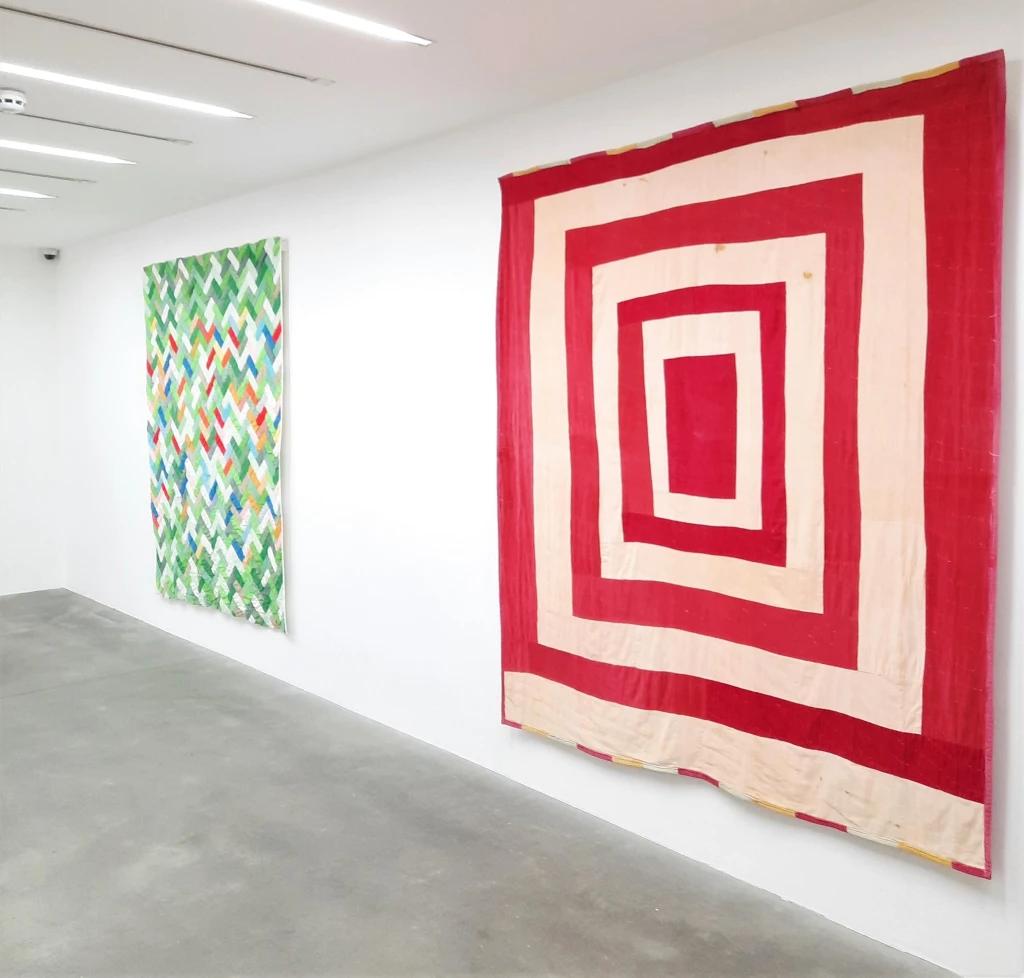The Gee's Bend Quiltmakers

Gee’s Bend is a village nestled in a bend of the Alabama river. Here, the skill of quilting has been passed down through generations of African-American women since the 19th century. Made to be used during the cold winters, the quilts were traditionally taken outside in the spring to be aired out. They were laid over washing lines and fences to be examined and enjoyed by neighbours, providing an opportunity to compare work and seek inspiration.
The quilts in the exhibition The Gee’s Bend Quiltmakers at Alison Jacques Gallery span almost a century of quiltmaking. The earliest was made by Annie E. Pettway in around 1930, and the most recent in 2019 by Loretta Pettway Bennett. Different generations of the same family are displayed together, mother beside daughter beside granddaughter. Most of the people who live in Gee’s Bend are descended from enslaved people, and the surname “Pettway” — the name of the plantation owner — is common among the quilters.
I love the way that the quilts on display have clearly been used and loved. The value of art and objects is so often predicated on their condition, from art at auction to books on eBay. We prefer to buy things that are in mint condition, that are “like new”. But why — especially in museums — do we want to hide an object’s history? Why do we have this obsession with perfection, maintaining and preserving it forever?

The stitching in this part of the quilt has come loose, this one is faded, this one stained. A clumsy child spilling a drink, scolded by their mother who spent so long toiling over the used scraps of material, fashioning beauty from clothes and fabric which themselves show the signs of use, of labour, of summer days and bitter mornings, of childhoods long gone and grandparents no longer here.
My nana also kept scraps — a beautiful dress too worn to wear, the leftovers from making that favourite jacket, and even the frilly bit from a pair of knickers. When she died last year, my mum and I went through bags and drawers full of material she had kept and wondered what to do with it all. How wonderful to sew them together and create something new, something to keep, containing the stories from my nana’s decades of making and treasuring.
In the white gallery, some quilts are hung on the walls like paintings. One elderly, fragile quilt rests on a plinth. Two are hung from the ceiling. With just a little imagination, I could almost see them swaying gently in the breeze, hung out on a washing line, touched by many hands, and awash with the sun of a new spring.

